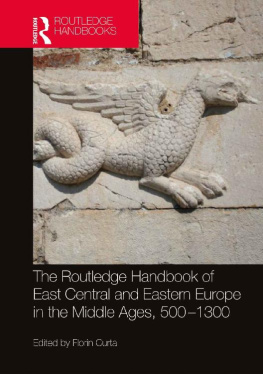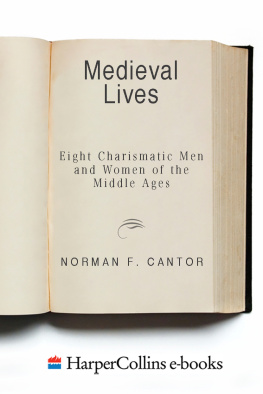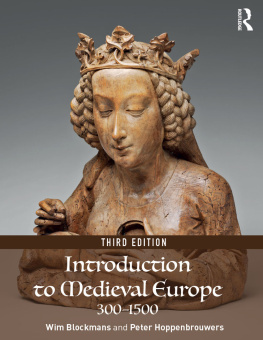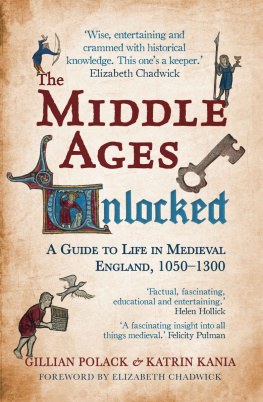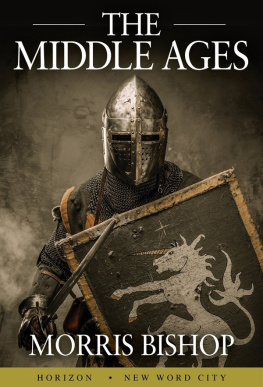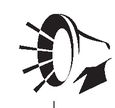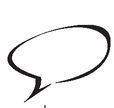Table of Contents
Introduction
People associate the Middle Ages with a period of darkness in Europe. To most, the people of the Middle Ages were barbaric and uncivilized, and modern civilization seems to be far superior in comparison. This belief about the Middle Ages is wrong.
If you examine the Middle Ages, you will start to see some uncomfortable similarities to our superior modern age, including a gap between the rich and the poor, violent acts done in the name of God, gangs of barbarians threatening the peace, poverty and migration created by war, questions over the authority of church and state, people looking for riches in the wrong places, and diseases without cures. Maybe after you read this book, you will realize that the modern world is not so different.
This history of the Middle Ages begins with the breakup of the Roman Empire and ends at the dawn of the Renaissance. It studies the political, economic, social, and cultural development of the three successor cultures of RomeByzantine, Islamic, and Germanicwith an emphasis on the latter. Among the topics to be covered in this book will be: the end of Rome, the rise of Christianity, the era of Germanic migrations, the Germanic West, the Catholic Church in the West, the Carolingian Empire, the ninth-century invasions, feudalism and manorialism, the Byzantine Empire, the rise of Islam, the Crusades, the development of medieval kingdoms and nation-states, class structure in the Middle Ages, the Renaissance of the high Middle Ages, the Mongol invasions, and the beginnings of the Reformation. This book also surveys the impact of these topics on the modern world.
The study of the Middle Ages includes several reoccurring themes:
The causes and effects of the migration of people
The creation and expansion of kingdoms and nations
The development of religion and culture
The conflict and cooperation between church and state
The people and their response to the environment
The growth of trade and commerce
So with the themes in focus, I wrote without placing as much emphasis on every historical detail. Instead I have tried to paint the historical picture with broad-sweeping thematic strokes. If you are interested in the fine details, use the further readings found in Appendix C to select an appropriate volume to find out more.
How This Book Is Organized
Part 1, The Early Middle Ages (550-1000), starts with the fall of the Roman Empire and the development of Western civilization from its rubble in Europe. But this development is not immediate. Several factors make it unique. As the Roman Empire reaches its peak, it is converted into a Christian empire. It is the Christian Roman Empire that rules over Europe, Asia, and Africa. Later, as that empire declines and collapses, it leaves three cultures behind that influence the events of the European Middle Ages. These cultures are the Byzantine, Islamic, and Germanic cultures.
Europe, once free of the Roman Empire, is overrun by the primitive and disorganized Germanic tribes. But the institutions of the Christian religion of the Roman Empire continue during this time and become the glue that holds Europe together. After a short period of stability during the reign of Charlemagne, Germanic tribes of Europe are transformed in kingdoms as they create new political and economic systems based on both Germanic and Roman structures.
Part 2, The High Middle Ages (1000-1300), begins with Europe seeing improvements from darker days of the early Middle Ages. There was a new optimism in Europe. In politics, the kingdoms of Europe were becoming more effective. Part of this was because the threat of invasions from the Vikings, Magyars, and Muslims was declining. In addition, the climate of the continent got warmer. A warmer climate coupled with new inventions allowed the manors of Europe to produce surplus crops. With the surplus, population and economic activity increased. With more people and trades, the older cities of Europe expanded and new cities appeared. Also with economic prosperity came an intellectual and cultural flowering. The church developed Christian theology more in depth than it had since the time of late antiquity and the early church. Universities like Oxford and the University of Paris were founded to educate a new professional and intellectual class made of nobles and a new middle class. From these universities came new ideas of self-awareness, reason, and logic.
Part 3, The Late Middle Ages (1300-1500), begins with the beginning of a decline in Europe caused by several events. In politics, two wars distracted the major kingdoms of Europe from nation building, the Hundred Years War between the England and France, followed by the English Civil War, called the War of the Roses, which diverted resources from Englands nation building. In the early Middle Ages, the church pitched in when kingdoms faltered but this time the church had its own set of problems. Religiosity grew oppressive as people sought stability in daily life. Controversy also surrounded the popes with the Babylonian Captivity and the Great Schism. These controversies brought up questions about the spiritual and earthly authority of the church. Things went from bad to worse with the Great Famine and the Black Death. The Great Famine weakened the constitution of the population and the Black Death finished them off. Between the two events over a third of the population of Europe was wiped out. People started to look to a glorious past, that of Rome and Greece, for relief and inspiration. As a result, the Renaissance or rebirth started in Italy and spread to northern Europe. This event ushered in the modern age of Europe.
Extras
Age-Makers
These sidebars will inform you of key historians and their work relating to the Middle Ages.
Middle Age Myths
These sidebars will dispel misconceptions perpetuated about the Middle Ages today.
definition
These sidebars will give you definitions of terms that will make you medieval smart.
Notable Quote
These sidebars will give you an interesting or important quote from the Middle Ages that is related to the topic in which you are reading.
Illuminations
This feature will inform you of really interesting facts and key points relating the Middle Ages to the present and also making you a hit at most any party.
Acknowledgments
This volume would not have been possible without the help of some important people in my life. First, I would like to thank my beautiful wife, Debra; wonderful son, Thomas; and supportive family for their understanding and patience with the long hours I put in on this text.



